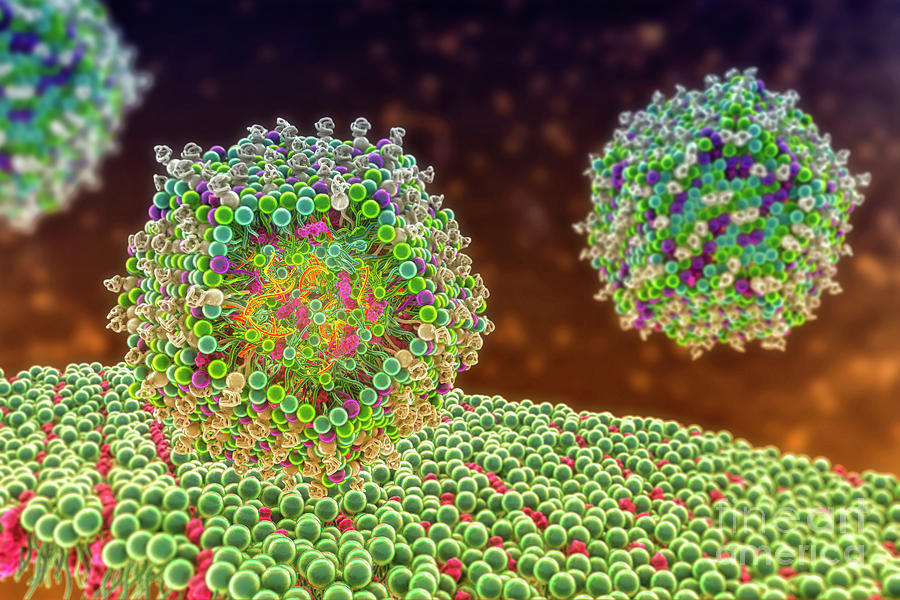mRNA Nanoparticles Reprogram Bone Marrow Cells
Stem cells are extremely early cells formed in the bone marrow. Bone marrow is the spongy material inside the bones. There are two varieties of bone marrow: red and yellow. Red one contains blood stem cells that can develop into red blood cells, white blood cells, or platelets. Yellow bone marrow is primarily composed of fat and contains stem cells capable of developing into cartilage, fat, or bone cells. Bone marrow stem cells are the source of all hematopoietic (blood) cells in the body. Bone marrow transplantation can be used to treat blood cell cancers, and to cure some non-malignant blood cell disorders however, locating or generating adequate donor bone marrow cells and preparing the body to receive that donation remain difficult challenges for the therapy. The ability to engineer bone marrow cells inside a patient without the need for traditional transplantation approaches could hold promise for a number of genetic disorders which lead to the development of mRNA nanoparticles. Researchers have developed a strategy to deliver mRNA directly into bone marrow stem cells where it can edit genetic defects and help repopulate the bone marrow with healthy blood cells.. The approach also can be used to burn up the bone marrow area of interest of hematopoietic stem cells in instruction for new stem cells. Messenger RNA was delivered to bone marrow stem cells by intravenous injection in lipid nanoparticles, facilitating both gene editing and bone marrow transplantation which will be a better replacement for the ex vivo technique.
mRNA nanoparticles
mRNA nanoparticles are a novel technology that is currently gaining attention in the rapidly changing field of medical science. By demonstrating their extraordinary capacity to reprogram bone marrow cells, these microscopic wonders have opened up new possibilities in the field of regenerative medicine. Within cells, messenger RNA (mRNA) acts as the genetic template for the creation of proteins. Medical research can take a significant step by using the power of mRNA in nanoparticle form. By delivering certain genetic instructions to target cells, these nanoparticles are designed to elicit desired biological reactions.
Lipid-based vehicles
The most widely used and advanced approach for systemic (intravenous) mRNA delivery is lipid-based formulations include lipoplexes, liposomes, and lipid nanoparticles (LNPs). They are more effective at forming a stable unit that protects the mRNA from enzymatic degradation, promotes cellular entrance, and enables subsequent endosomal release.
Sickle cell Anemia
Over the course of a person’s lifetime, all blood cells come from hematopoietic stem cells (HSCs). Using HSC transplantation (HSCT) as an Ex vivo procedure, diseased HSCs can be replaced with gene-engineered or healthy precursor cells. But access to current procedures is restricted and they have significant adverse effects. To target the stem cell factor receptor (CD117) on the surface of HSCs, scientists have created a lipid nanoparticle (LNP) called CD117/LNP-messenger RNA, which contains messenger RNA (mRNA). Hematopoietic sickle cells were almost entirely corrected when the anti-human CD117/LNP-based editing system was delivered, resulting in round-shaped cells. Additionally, pro-apoptotic PUMA (p53 up-regulated modulator of apoptosis) mRNA delivered in vivo in conjunction with CD117/LNP impacted HSC function and allowed for nongenotoxic conditioning for HSCT. Targeting HSCs in vivo provides a nongenotoxic condition for HSCT. This technique may also serve as the foundation for in vivo genome editing to treat hereditary diseases, hence eliminating the requirement for HSCT.
A number of therapies that alter hematopoietic stem cells (HSCs), bone marrow precursors of blood cells. However, they involve the laborious and costly procedure of removing the HSCs, working with them in a sterile environment, and then putting them back into the body. Additionally, in order to eliminate the existing HSCs in the bone marrow, patients frequently need to undergo a severe chemotherapy regimen prior to receiving the modified HSCs.
Utilising antibodies to direct the payload to the desired location, the new advancement only requires one injection. Not only does it not require the extraction of cells, but it directly modifies genes or cells within the body. Two payloads were created by the researchers: one altered a mutation causing sickle cell disease, and the other specifically killed HSCs, removing the requirement for chemotherapy prior to HSC transplantation. Gene therapy could become more economical for both our patients and the healthcare system if the medicines are successfully adapted to human needs.
Using viruses to deliver editing tools straight to blood cells, researchers have recently treated mice with sickle cell disease. In one experiment, the scientists placed an mRNA encoding an enzyme into the targeted lipid balls, which in the cells of altered mice activates a gene for a luminous protein. More than 50% of the rodents’ blood cells glowed red after the balls were injected; this might, in theory, be utilised to cure numerous hereditary illnesses without the use of chemotherapy. However, these viruses may cause immunological reactions in human patients. Additionally, patients might still require chemotherapy because the viruses don’t mend enough blood cells. The SARS-CoV-2 spike protein is produced by mRNA COVID-19 vaccines using a similar technique that does not require an antibody.
A clinical trial remains far off for the researchers. Since the dose of nanoparticles is “fairly high,” potential toxicity needs to be investigated. Additionally, a small amount of nanoparticles entered lung and liver tissue, where they are not required and may be harmful. To target the particles specifically to blood cells, further modifications might be necessary. Therefore, more preclinical research will be required to verify this technique’s safety and efficacy in non-human primates and humanised stem cell niches before it can be used in humans.
Source

